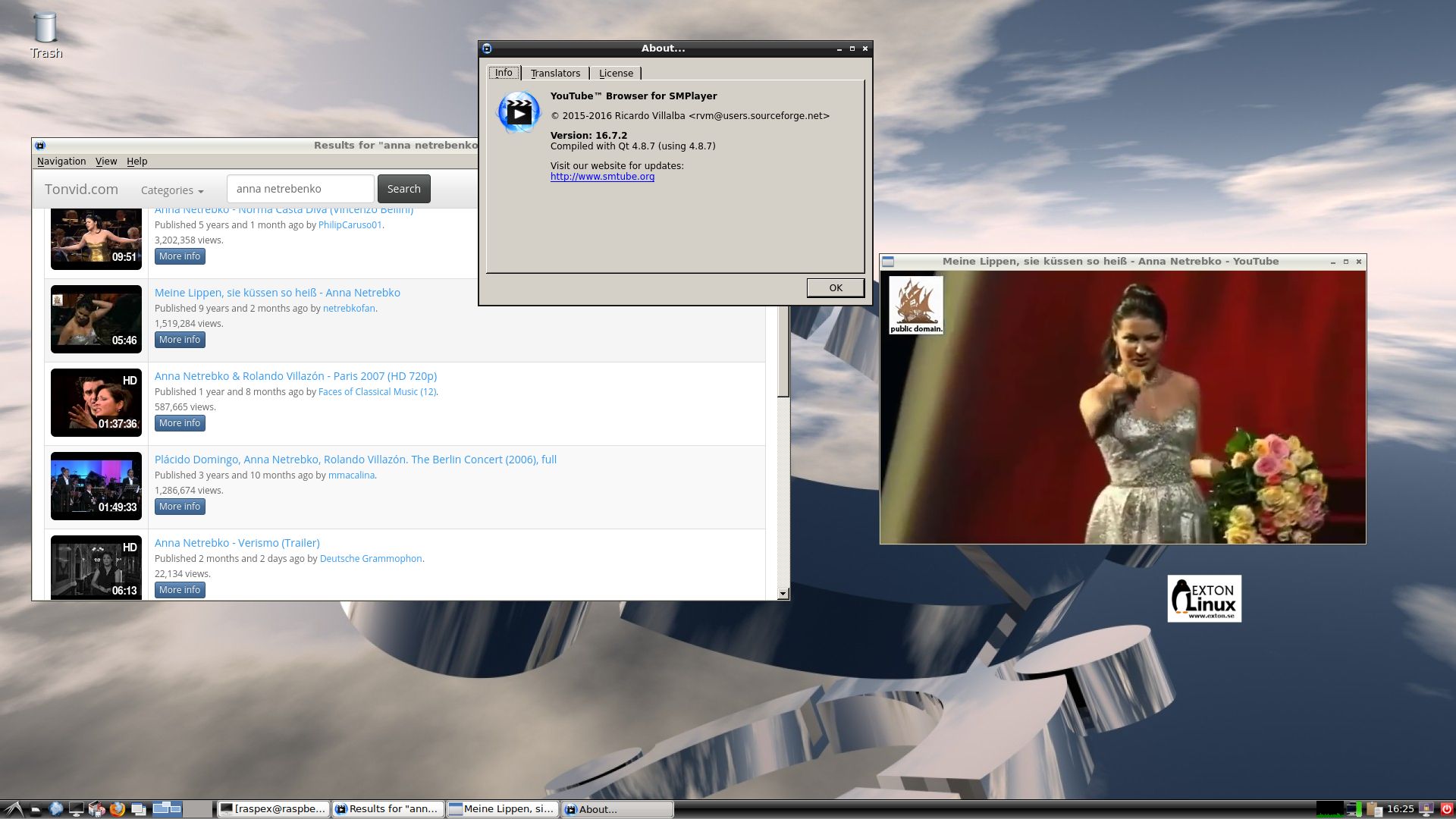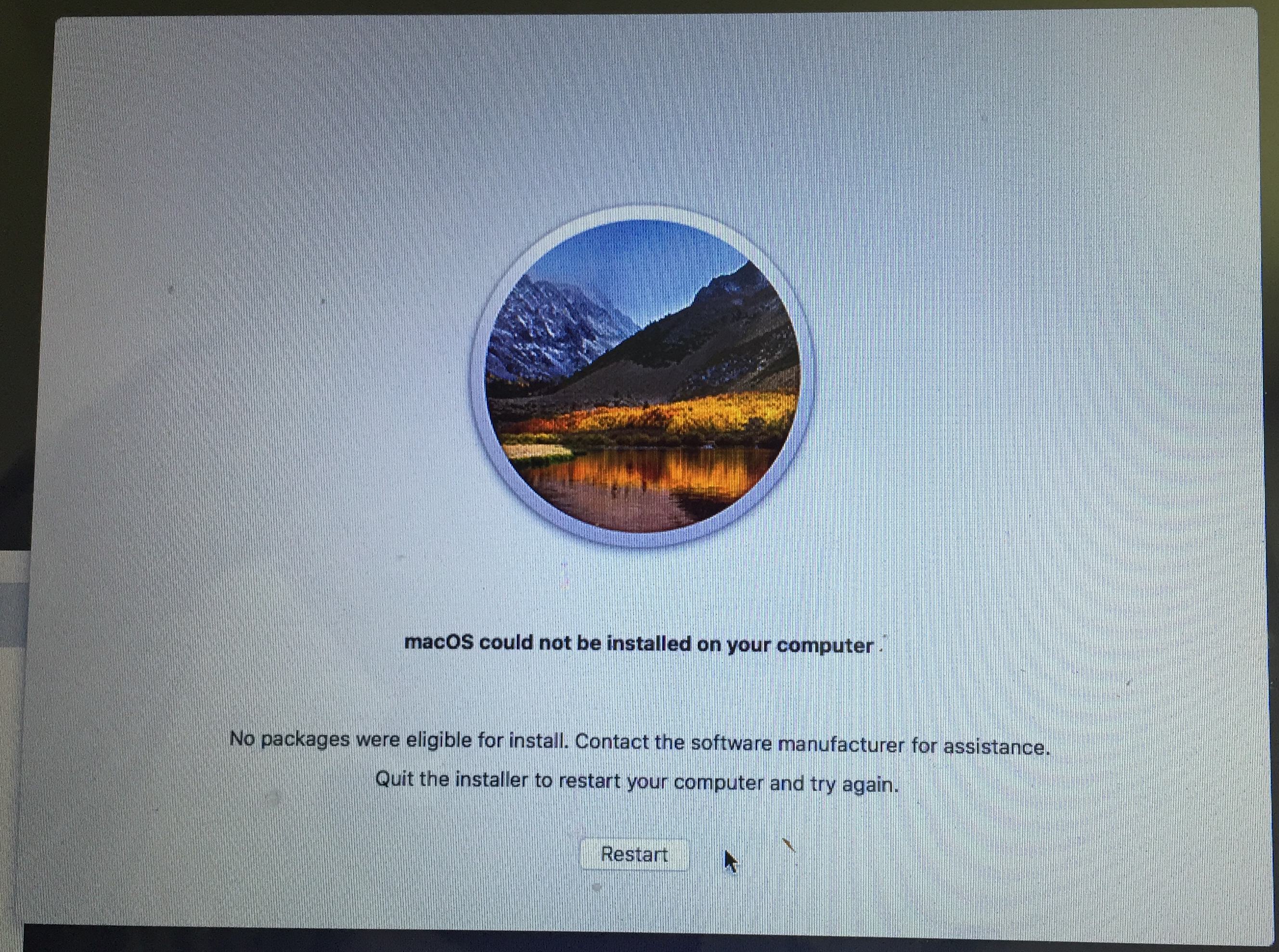- How Do You Fix No Packages Were Eligible For Install
- Os X Could Not Be Installed No Packages
- Os X Could Not Be Installed No Packages Were Eligible For Install
- Mac Os Cannot Be Installed
- Macos Could Not Be Installed
Then you can try to reinstall macOS or install the updates again. Fix 3: Restore from Time Machine backup. When you macOS stuck in macOS could not be installed on your computer, you can boot your Mac into the Recovery Mode to restore from Time Machine. Here’s how you can do it: 1) Hold down the power button to shut down your Mac. Fix: macOS Could not be Installed on Your Computer If the issue is with your Computer or a Laptop you should try using Restoro which can scan the repositories and replace corrupt and missing files. This works in most cases, where the issue is originated due to a system corruption. 'OS X could not be installed on your computer. No packages were eligible for install.' Is there something I'm missing here? It used to be perfectly functional under OS X Yosemite. Any help appreciated. Sep 16, 2021 The Mojave 10.14.1 update does NOT install properly on unsupported machines, and could result in an unbootable OS. If you want to install the 10.14.1 update (and are not currently running 10.14.1), perform the following steps.
Dec 16, 2019 Error Message: 'OS X could not be installed on your computer. No packages were eligible for install. Contact the software manufacture for assistance. Quit the installer to restart your computer. Jul 13, 2015 I am trying to install the Public Beta version of El Capitan and after about 10-15 mins of trying to install, a message pops up that says 'no packages were eligible for install' and the installation fails. Here's what I've tried so far: Restarting with command + r: - I do not have a Time. How to fix OS X Installer Failure 'No packages were eligible for install. Contact the software manufacturer for assistance' Posted by Scotton Friday, November 2. 2018 If you ever get this error while attempting to install OS X, you will likely need to set the date using terminal. Everything you need to do to repair your OS X Installation when trying running of USB. “No packages were eligible for install” – Unable to install El Capitan. Nov 04, 2019 - Install an older version of Mac OS X, (if your machine can go up to el capitan, but if it doesnt install elCap, try installing Yosemite, etc.). No packages were eligible for install.
UpdatesImportant Notes:
- Using APFS is REQUIRED in Mojave in order to receive system updates via the normal Software Update method. If you choose to continue using macOS Extended (Journaled) as your filesystem type, you will NOT receive System Updates via System Preferences. If you are not using APFS, you can follow the 10.14.1 installation steps below.
- After applying ANY system update via Software Update, re-applying post-install patches using your Mojave Patcher installer volume will most likely be necessary. If you install a software update and the system fails to boot afterwards, this is what needs to be done.
10.14.6
10.14.6 can be updated normally via Software Update if using an APFS volume, and will need to be patched using an installer volume created with Mojave Patcher version 1.3.2 or later after installing. Airdrop for mac os x 10.6 8.
How Do You Fix No Packages Were Eligible For Install
10.14.5
10.14.5 can be updated normally via Software Update if using an APFS volume, and will need to be patched using an installer volume created with Mojave Patcher version 1.3.1 or later after installing.
10.14.4

10.14.4 adds new changes that ARE NOT patchable by the post-install tool of Mojave Patcher v1.2.3 and older! Before updating to 10.14.4, you you will need to use the latest Mojave Patcher version to create a new installer volume, using the 10.14.4 installer app. Then, update to 10.14.4, either by installing via Software Update, or by just using the installer volume you've created to install.
Apple No Packages Were Eligible For Install
10.14.3If you are currently running 10.14.1 or 10.14.2, you can simply use the Software Update pane of System Preferences (if using APFS) to apply the 10.14.3 update. Once the update is installed, you will most likely need to re-apply post-install patches to get the system to boot again. This process is detailed in steps 8 - 10 above. If you are currently running 10.14.0, you'll need to proceed with the 10.14.1 update method described below.
10.14.2
Os X Could Not Be Installed No Packages
If you are currently running 10.14.1, you can simply use the Software Update pane of System Preferences (if using APFS) to apply the 10.14.2 update. Once the update is installed, you will most likely need to re-apply post-install patches to get the system to boot again. This process is detailed in steps 8 - 10 above. If you are currently running 10.14.0, or are using a non-AFPS volume, you'll need to proceed with the 10.14.1 update method described below.
10.14.1/macOS Extended (Journaled) volumes
Os X Could Not Be Installed No Packages Were Eligible For Install
Free antivirus for mac os x 10.7 5. The Mojave 10.14.1 update does NOT install properly on unsupported machines, and could result in an unbootable OS. If you want to install the 10.14.1 update (and are not currently running 10.14.1), perform the following steps:
• Download the latest version of Mojave Patcher
• Download the installer using the Tools menu of Mojave Patcher
• Create a patched USB installer
• Boot from that, and install 10.14.1 onto the volume containing an older release.
• Once done, apply the post-install patches, and you should now be on 10.14.1.
